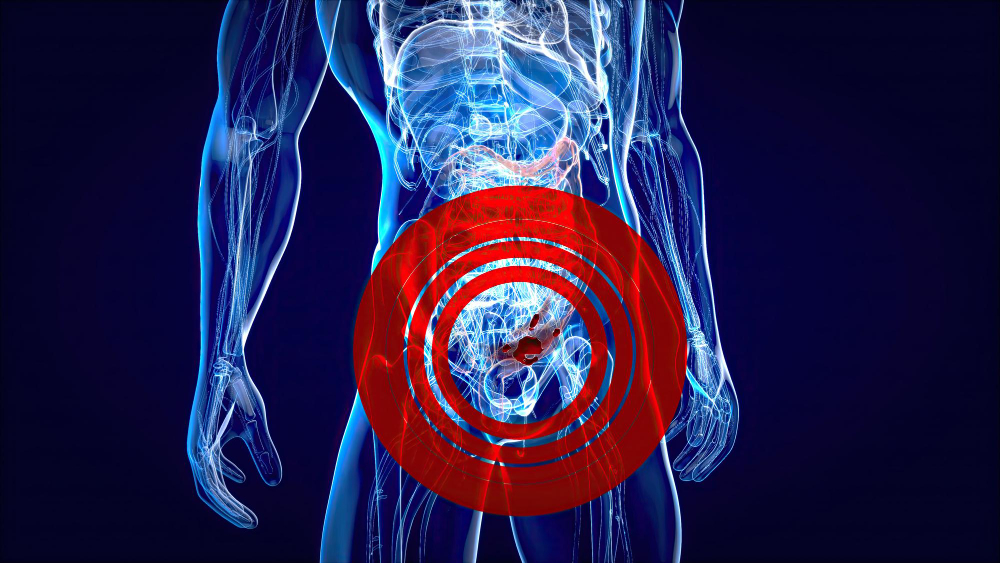Pelvic organ prolapse (POP) is a common yet often misunderstood condition affecting millions of women worldwide. It occurs when the pelvic floor muscles and tissues weaken, allowing one or more pelvic organs to drop (prolapse) into or out of the vaginal canal. While the condition can be distressing and significantly impact a woman’s quality of life, understanding its symptoms, treatment options, and recovery process can help manage and mitigate its effects.
Understanding Pelvic Organ Prolapse
Pelvic organ prolapse occurs when the pelvic organs—such as the bladder, uterus, vagina, small bowel, or rectum—descend from their normal position and bulge into the vaginal canal. This condition results from the weakening or damage of the pelvic floor muscles and connective tissues, which can be due to childbirth, aging, menopause, or other factors.
Types of Pelvic Organ Prolapse
There are several types of pelvic organ prolapse, each involving different organs:
-
Cystocele (Bladder Prolapse): The bladder drops into the front wall of the vagina.
-
Rectocele (Rectal Prolapse): The rectum bulges into the back wall of the vagina.
-
Uterine Prolapse: The uterus descends into the vaginal canal.
-
Enterocele (Small Bowel Prolapse): The small intestine descends into the space between the rectum and vagina.
-
Vaginal Vault Prolapse: The top of the vagina drops, usually occurring after a hysterectomy.
Symptoms of Pelvic Organ Prolapse
Symptoms of POP can vary depending on the type and severity of the prolapse. Common signs and symptoms include:
-
A feeling of pressure or fullness in the pelvic area
-
A bulge or protrusion in the vagina
-
Urinary incontinence or retention
-
Difficulty having a bowel movement
-
Pain or discomfort during sexual intercourse
-
Lower back pain
-
Vaginal bleeding or spotting
These symptoms can range from mild to severe, with some women experiencing significant discomfort and others having no noticeable symptoms.
Diagnosis
Diagnosing pelvic organ prolapse typically involves a pelvic exam, during which a healthcare provider will check for bulges or protrusions in the vaginal canal. Additional tests, such as urodynamic studies, ultrasound, or MRI, may be performed to assess the extent of the prolapse and determine the best course of treatment.
Treatment Options
Treatment for pelvic organ prolapse depends on the severity of the condition, the type of prolapse, and the patient’s overall health and preferences. Options range from conservative management to surgical interventions.
Conservative Treatments
-
Pelvic Floor Exercises (Kegels): Strengthening the pelvic floor muscles through regular exercises can help improve mild to moderate prolapse symptoms and prevent further deterioration.
-
Pessaries: These are removable devices inserted into the vagina to support the pelvic organs. Pessaries come in various shapes and sizes and can be an effective non-surgical option.
-
Lifestyle Changes: Weight management, avoiding heavy lifting, and treating chronic cough or constipation can reduce the strain on the pelvic floor and alleviate symptoms.
Surgical Treatments
When conservative treatments are not effective, surgery may be recommended. Surgical options include:
-
Anterior and Posterior Colporrhaphy: This procedure repairs the front (anterior) or back (posterior) walls of the vagina to correct bladder or rectal prolapse.
-
Hysterectomy: In cases of uterine prolapse, removing the uterus (hysterectomy) may be necessary.
-
Sacrocolpopexy: This surgery attaches the top of the vagina to the sacrum (a bone at the base of the spine) using a mesh to provide support.
-
Sacrohysteropexy: Similar to sacrocolpopexy, this procedure involves attaching the uterus to the sacrum using a mesh.
-
Vaginal Vault Suspension: This procedure lifts and supports the top of the vagina using sutures or mesh.
Recovery After Pelvic Organ Prolapse Surgery
Recovery from pelvic organ prolapse surgery varies depending on the type of surgery performed and the patient’s overall health. Generally, the recovery process includes the following stages:
Immediate Postoperative Period
-
Hospital Stay: Most surgeries require a hospital stay of one to three days.
-
Pain Management: Pain and discomfort are common after surgery. Medications will be provided to manage pain.
-
Activity Restrictions: Patients are advised to avoid heavy lifting, strenuous activities, and sexual intercourse for several weeks.
Short-Term Recovery
-
Follow-Up Visits: Regular follow-up visits with the surgeon are essential to monitor healing and address any complications.
-
Pelvic Rest: Continued avoidance of activities that strain the pelvic floor, including lifting heavy objects and intense exercise.
-
Gradual Increase in Activity: Slowly increasing physical activity, such as walking, to promote circulation and prevent blood clots.
Long-Term Recovery
-
Pelvic Floor Rehabilitation: Engaging in pelvic floor physical therapy to strengthen the muscles and support recovery.
-
Lifestyle Modifications: Maintaining a healthy weight, managing constipation, and avoiding activities that put excessive strain on the pelvic floor.
-
Monitoring and Maintenance: Regular check-ups with a healthcare provider to monitor for any signs of recurrence or complications.
Complications and Risks
As with any surgery, there are potential risks and complications associated with pelvic organ prolapse surgery. These may include:
-
Infection: Postoperative infections can occur and may require antibiotics.
-
Bleeding: Excessive bleeding during or after surgery.
-
Pain: Persistent pain or discomfort in the pelvic area.
-
Recurrence: The prolapse may recur, necessitating additional treatment.
-
Urinary or Bowel Issues: Temporary or permanent changes in urinary or bowel function.
-
Mesh Complications: If mesh is used, there is a risk of mesh erosion or infection.
Living with Pelvic Organ Prolapse
While pelvic organ prolapse can significantly impact a woman’s quality of life, many women find relief through a combination of treatments and lifestyle modifications. Understanding the condition, seeking appropriate medical care, and making informed decisions about treatment options are crucial steps in managing POP.
Tips for Managing Pelvic Organ Prolapse
-
Stay Active: Engage in low-impact exercises, such as walking, swimming, and yoga, to maintain overall health and support pelvic floor strength.
-
Perform Pelvic Floor Exercises: Regularly practice Kegel exercises to strengthen the pelvic floor muscles.
-
Manage Weight: Maintain a healthy weight to reduce pressure on the pelvic floor.
-
Avoid Heavy Lifting: Minimize activities that involve heavy lifting or straining.
-
Stay Hydrated and Eat Fiber: Prevent constipation by drinking plenty of water and eating a high-fiber diet.
-
Seek Support: Join support groups or seek counseling to address the emotional and psychological impact of POP.
Conclusion
Pelvic organ prolapse is a condition that affects many women, particularly as they age or after childbirth. While the symptoms can be challenging, understanding the condition and exploring various treatment options can help manage and alleviate the discomfort associated with POP. Whether through conservative treatments or surgical interventions, women can find relief and improve their quality of life. Recovery from surgery requires patience and adherence to postoperative guidelines, but with proper care, many women regain normal function and well-being. By staying informed, seeking medical advice, and adopting healthy lifestyle habits, women with pelvic organ prolapse can navigate their condition with confidence and resilience.
Want to learn more about laparoscopic prolapse surgery in Patiala? Contact us today to schedule an appointment to learn more about prolapse laparoscopic surgery




